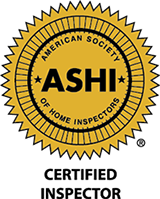Toxic Mold Sampling & Testing
Valley Home Inspection can perform air tests or take surface samples to help determine if mold is present in a home and if so, what type of mold is present. This service is not part of a standard home inspection but can be added to it.
We use two types of mold testing techniques to collect mold air samples both indoors and outdoors [called outdoor control test].
-
Controlled air testing impactors that use an air pump to draw in and impact airborne mold spores onto the sticky surface of a mold culture plate. These impactors are then sent to a laboratory for analysis.
-
Direct sampling of visually-noticeable mold growth through lift tape sampling which is then sent to a laboratory for analysis.
Is there mold contamination inside the building's heating, ventilating, and air conditioning system [HVAC], and/or HVAC ducts? We can tape mold culture plates [sticky surface facing inward] onto at least one air supply register grill of each zone of your heating, cooling, and ventilating [HVAC system], and then run the HVAC system for 15 minutes to impact possible mold infestation spores onto the sticky surface of the mold culture plates. These plates are then sent to a laboratory for analysis.
Where mold grows easily
- Attics with roof leaks or inadequate ventilation
- Basements with dirt floors or water problems
- Behind and under showers, tubs, toilets, and bathroom walls
- Books, magazines, newspapers
- Carpeting and padding
- Ceilings [from roof leaks]
- Ceiling tiles
- Clothing
- Crawl spaces
- Drapes
- Drywall in ceilings and walls
-
Garbage disposal
- Heating/cooling equipment & ducts
- Humidifiers & vaporizers [inside]
- Leather items
- Paint
- Paper, cardboard & other paper products
- Plants [house plants]
- Rags
- Upholstered furniture
- Walls [from siding, roof, & plumbing leaks]
- Wallpaper & behind wallpaper
- Wood products
Frequent Causes of Mold Growth
- Basement flooding and water intrusion
- Closeness to lake, river, or ocean
- Clothes dryer exhausting into walls, ceiling, or attic
- Construction defects + poor workmanship
- Crawl space
- Firewood stored indoors
- Flooding
- High indoor humidity [60%+]
- Humidifiers & vaporizers
- Inadequate ventilation
- Indoor plants
- Lot grading downward to home
- Overflow from tubs, showers, sinks, & toilets
- Landscaping mistakes like mulch & plant glut
- Leaky roof
- Sewage pipe leaks
- Siding water leak
- Venting inadequacies in kitchen & bathrooms
- Water supply pipe leaks

 NACHI CPI
#18092023
NACHI CPI
#18092023
 #244451
#244451

